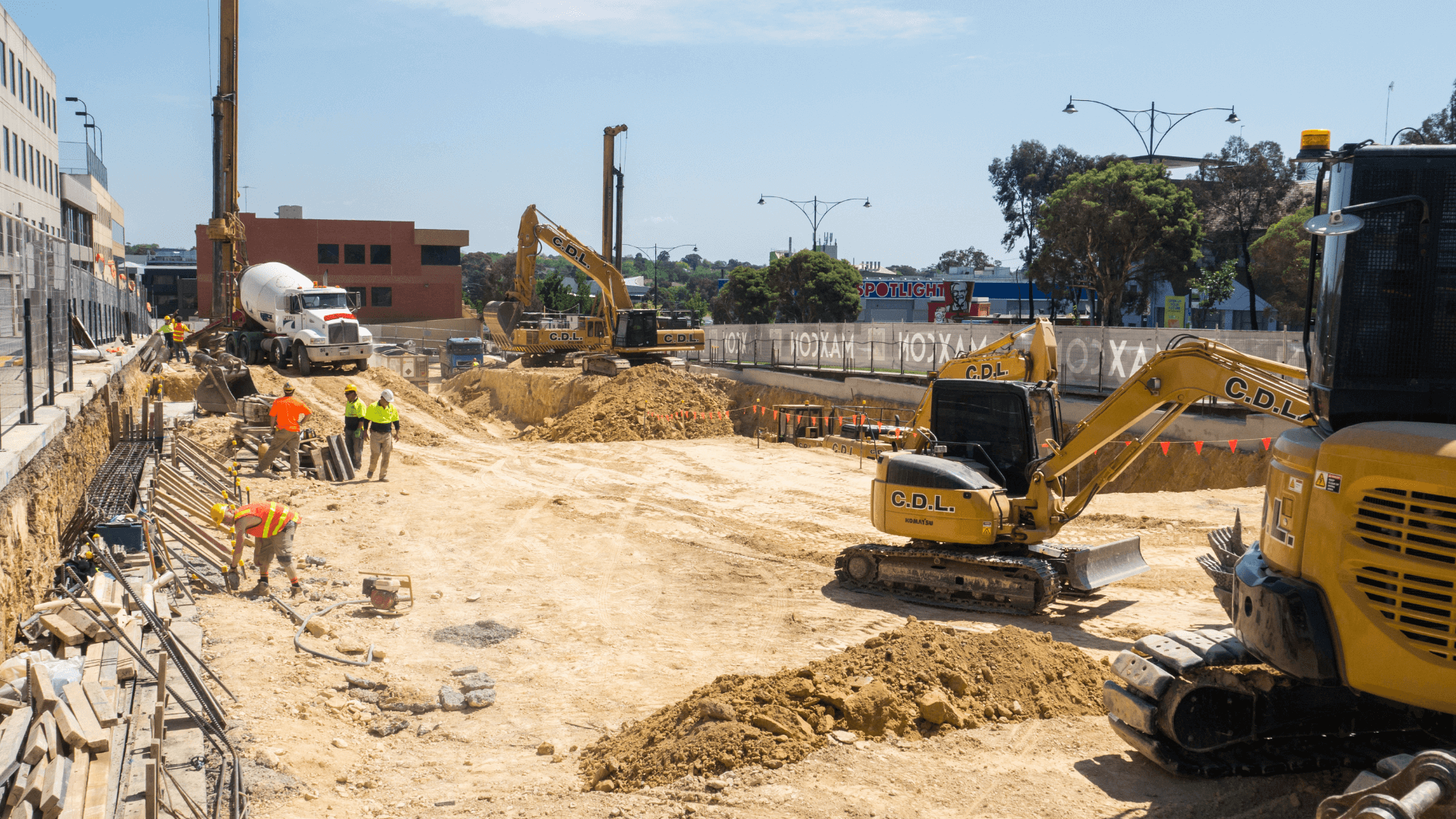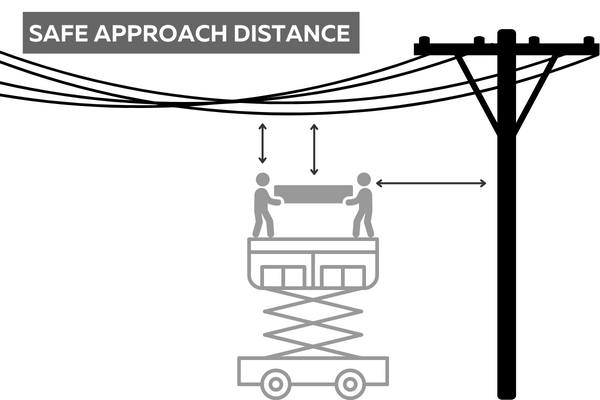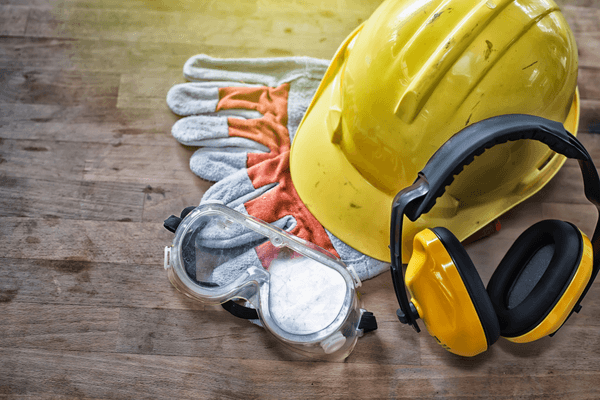It’s a risk for everyone
It’s not only electricians that need to be cautious of electrical hazards. Whether you’re working on scaffolding, operating a crane, or driving an oversized vehicle, everyone needs to be aware of electrical risks on a building site.
Keep safe by using signs and safety observers
- Assign safety observers on job sites to monitor exclusion zones.
- Display warning signs for workers and the public.
- Install temporary insulated barriers.
- Use tiger tails or visual indicators to draw attention to live electricity.
Operating high machinery
Completing an on-site risk assessment before operating high machinery is a critical step in maintaining your safety. If you’re operating high machinery, it’s important you know the location of all overhead powerlines and your proximity to them. It’s the operator’s responsibility to be aware of the height and reach of their machinery, and that exclusion zones are maintained.
It is recommended an observer is engaged to monitor machines working near overhead powerlines.
Don’t forget at the end of each job or before every relocation, to lower all machinery into the transport position.
Scaffolding
Erecting or working on scaffolding can put you at risk of coming in contact with energised overhead powerlines. Also, coming too close to overhead powerlines can cause a ‘flashover’, which can result in an electric shock, serious injury, or even death.
Setting up & dismantling
Always assign a safety observer when moving, erecting, or dismantling scaffolding near overhead powerlines. Their role is incredibly important; watching out to warn of unsafe conditions and ensure minimum safe approach distances are maintained.
Stay switched on when working near electricity
Even the smallest lapse in judgement could be devastating when working near electricity. Reduce your risk by starting each day with a safety mindset. Consider the following:
- Do not enter any exclusion zones for overhead and underground electrical assets.
- Follow the industry standard for electrical installations, known as 'wiring rules'.
- Remember, only licensed or registered electricians should perform repairs to electrical installations.
- Apprentice electricians must be appropriately supervised.
- Registered electrical contractors (RECs) must not work on energised installations.
- Ensure Safe Work Method Statements (SWMS) are prepared for high-risk construction work (HRCW) - for example, any work on or near energised electrical installations or services.
- Perform all work according to the SWMS for HRCW.
What’s a minimum approach distance?
It’s the amount of space required between machinery or objects held by a person and the powerlines to prevent electricity arcing to you or the machinery. The minimum approach distance will depend on the voltage of the powerlines you’re working near. Check your electricity distributor for specific guidance on minimum approach distances.
Always ensure minimum safe approach distances account for the potential for changes in weather conditions. A safe distance needs to be maintained when positioning the scaffold, by allowing for powerline movement brought on from strong winds when.
Personal protective equipment
The correct personal protective equipment (PPE) could save your life. When on the job, be sure to use appropriate PPE including electrical gloves, eye protection, face shield, full coverage arc flash resistant clothes and safety boots.
In a recent case, a company was fined $150,000 after one worker received serious burns from an arc flash explosion when replacing a circuit breaker. The worker was not wearing protective gloves or goggles at the time, breaching the Work Health and Safety Act 2011.
Avoid frequent electrical hazards on the job
- Test and tagInspect and maintain (test and tag) portable electrical equipment.
- InspectInspect and test residual current devices (RCDs) at required intervals.
- Identify live wiringIdentify and notify workers of live, permanent wiring on-site before work starts.
- De-energised workDe-energise electrical installations and wiring when working on or near it.
- Construction switchboardsInstall and maintain construction switchboards in a safe manner.
Safe work method statements (SWMS)
Ensure Safe Work Method Statements (SWMS) are prepared for high-risk construction work (HRCW). For example, work conducted on or near an energised electrical installation or service is considered HRCW and must not start until a SWMS is prepared.
A SWMS must:
- Identify all work that is HRCW
- List the hazards and risks to health and safety
- Include measures to control the risks and detail how these measures will be implemented
- Be readily accessible and easy to understand
If a SWMS is unavailable or not followed, the employer (including those self-employed) must stop work immediately or as soon as it is safe to do so. Work must not resume until the SWMS is complied with or, if necessary, reviewed.
Risks and responsibilities
Work Health and Safety Act 2011 requires the managment of risks that impact the health and safety of everyone in your workplace. For businesses, this includes anyone who works for you, including contractors, customers, visitors, and suppliers. In the building and construction industry, this means eliminating the risk of electrical incidents so far as is reasonably practicable.
While at work, employees must take reasonable care for their own health and safety and that of others. If you see something, say something. Don’t turn a blind eye to something that is unsafe, as there could be devastating consequences if ignored.


